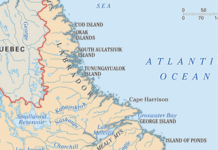
Note: Other includes hydroelectric, landfill gas, wood/wood waste biomass, petroleum liquids, and other waste biomass. (Source: EIA)
Of the 6.9 GW of onshore wind scheduled to come online in 2017, 86% came online as scheduled in 2017; on the other hand, 792 MW was delayed, and 155 MW was canceled, according to new data from the U.S. Energy Information Administration (EIA).
Behind natural gas, renewable energy technologies – wind and solar PV generation – represented the next two largest groups of electricity generating capacity additions in 2017. About 3.9 GW of utility-scale solar PV capacity was completed as scheduled last year, while 1.2 GW was delayed to 2018 or beyond, says EIA.
Every month, EIA collects information about all utility-scale power plants in the U.S., including planned projects reported by developers. EIA relies on information reported by developers and plant owners to track electricity generating capacity, upcoming retirements, and planned new capacity on a monthly basis.
In EIA’s Annual Electric Generator Report (EIA-860), power plant developers told EIA they planned to install 25.1 GW of generating capacity in the upcoming year, 2017. Of this amount, 19.7 GW (78%) came online last year as scheduled. About 5.3 GW of planned capacity was delayed into 2018 or later years, and few projects were canceled, the agency says.
Further, about 809 MW of the capacity added in 2017 was not anticipated at the end of 2016; notably, most of these plants (660 MW) were solar PV projects. Another 410 MW came online earlier than reported.
EIA says its Annual Electric Generator Report collects data on the status of existing electric generating plants in the U.S., along with proposed generating units scheduled for initial commercial operation within the next five years for most technologies and 10 years for coal and nuclear units.
The monthly version of this survey, the Preliminary Monthly Electric Generator Inventory (EIA-860M), collects data on the status of proposed new generators scheduled to come online within the next 12 months. This monthly survey collection began in 2005. Both surveys cover utility-scale generators, which are those with nameplate capacities of 1 MW or greater.

Natural gas combined-cycle plants accounted for 10.1 GW, or 40%, of the total proposed capacity that had been scheduled to come online in 2017. Of this amount, 7.5 GW came online within the year, and 2.6 GW was delayed until 2018.
According to EIA, near-term expectations for projects coming online tend to be more accurate than longer-term expectations for projects coming online. The information reported to EIA at the end of 2013 for what would be installed in the subsequent year was very similar to what was actually installed in 2014; there was a difference of only 200 MW, or about 1% of the total.

In later years, however, actual installations differed from the end-of-2013 expectations, as more than 10 GW of capacity came online during 2014 through 2017 that was not anticipated in 2013 EIA-860 reporting.
EIA says notable capacity differences in some technologies, such as wind and solar, can be attributed to changes in subsidies, faster installation times and decreasing costs. These factors influenced both the timing and magnitude of wind and solar capacity additions, according to the agency.
Nuclear capacity additions also faced delays: At the end of 2013, the Watts Bar Unit 2 plant in Tennessee was expected to come online in 2015, and two other nuclear plants were expected to come online in 2017. In reality, Watts Bar Unit 2 came online in June 2016, and the other two projects (Vogtle Units 3 and 4 in Georgia and Virgil C. Summer Units 2 and 3 in South Carolina) were delayed indefinitely.



